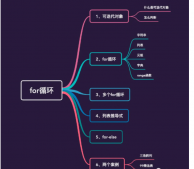pandas中包含了DataFrame和Series数据类型,分别表示二维数据结构和一维数据结构。
简单的可以理解为Series为excel表的某一行或者列,DataFrame是多行多列的区域。
Series类型
- 当我们说excel中某一个列段的数据时(单独的一列), 说第几个数据,我们一般会说,是第几行的数据,那么,可见虽然它是一个一维的数据,但是还有索引的。
- Series数据的默认索引为0,1,2,3,4,5…,也称位置索引或隐式索引。自定义索引后,称为标签索引,可以用位置索引和标签访问Series。
Series的三种创建方式
通过数组创建Series
|
1
2
3
4
5
6
7
|
import pandas as pdimport numpy as nps1 = pd.Series([1,2,3,'tom',True])s2 = pd.Series(range(0, 10, 1))print(s1)print(s2)print(type(s1), type(s2)) |
创建指定索引列的Series
索引为数组
|
1
2
3
4
5
6
7
8
9
|
s1 = pd.Series([1,2], index=["a", "b"])s2 = pd.Series(range(10,15,1), index=list('ngjur'))s3 = pd.Series(range(100,110,2), index=range(4,9,1))print(s1)print(s2)print(s3)print(s1["a"], s1[1]) #位置索引从0开始print(s2["r"], s2[-2]) #位置索引从0开始,可以用和列表同样的索引访问方式,-1表示最后一个元素print(s3[4]) #当定义的索引为数字时,会覆盖之前位置索引的方式,也就是说s3[0]到s3[3],s3[-1]将不能再访问。 |
a 1
b 2
dtype: int64
n 10
g 11
j 12
u 13
r 14
dtype: int64
4 100
5 102
6 104
7 106
8 108
dtype: int64
1 2
14 13
100
使用字典创建
key为标签索引,value为series的每个元素的值
|
1
2
|
s1 = pd.Series({'tom':'001', 'jack':'002'})print(s1) |
tom 001
jack 002
dtype: object
标量创建Series对象
如果data是标量值,则必须提供索引
|
1
2
|
s1 = pd.Series(5, [0, 1, 2, "a"])print(s1[[1, "a"]]) |
1 5
a 5
dtype: int64
Series的常见操作
Series的值访问
series_name[],[]内可以为单个位置索引或者标签索引,也可以为位置切片或者标签切片,也可以为位置索引列表或者标签索引列表
|
1
2
3
4
5
6
7
8
9
10
|
s1 = pd.Series({'tom':'001', 'jack':'002', "Jim":"003"})s2 = s1[["tom", "jack"]] #使用标签索引列表s3 = s1[0:3] # 使用位置切片s4 = s1["tom":"Jim"] #使用标签切片s5 = s1[[0,1]]print("s1-----\n", s1["tom"], type(s1[1])) print("s2-----\n", s2, type(s2)) #使用标签索引列表print("s3-----\n", s3, type(s3)) #使用位置切片print("s4-----\n", s4, type(s4)) #使用标签切片print("s5-----\n", s5, type(s5)) #使用位置索引列表 |
s1-----
001 <class 'str'>
s2-----
tom 001
jack 002
dtype: object <class 'pandas.core.series.Series'>
s3-----
tom 001
jack 002
Jim 003
dtype: object <class 'pandas.core.series.Series'>
s4-----
tom 001
jack 002
Jim 003
dtype: object <class 'pandas.core.series.Series'>
s5-----
tom 001
jack 002
dtype: object <class 'pandas.core.series.Series'>
访问整个series
- series_name.values属性
- 返回numpy.ndarray类型
|
1
2
3
4
|
s1 = pd.Series({'tom':'001', 'jack':'002', "Jim":"003"})s2 = s1.valuesprint("s2-----\n", s2, type(s2)) s3 = pd.Series({'tom':90, 'jack':40, "Jim":100}) |
s2-----
['001' '002' '003'] <class 'numpy.ndarray'>
s2-----
[ 90 40 100] <class 'numpy.ndarray'>
获取索引列
|
1
2
3
4
5
6
|
series_name.indexs1 = pd.Series(['tom', 'jack', "Jim"], [90, 100, 60])print("s1-----\n", s1, type(s1))s1_index = s1.indexprint("s1_index-----\n", s1_index, type(s1_index))print("s1_name:", s1.name) |
s1-----
90 tom
100 jack
60 Jim
dtype: object <class 'pandas.core.series.Series'>
s1_index-----
Int64Index([90, 100, 60], dtype='int64') <class 'pandas.core.indexes.numeric.Int64Index'>
s1_name----- None
设置名称
如果 Series 用于生成 DataFrame,则 Series 的名称将成为其索引或列名称
|
1
2
|
s1 = pd.Series(np.arange(5), name='ABC',index=['a','b','c','d','e'])print(s1) |
a 0
b 1
c 2
d 3
e 4
Name: ABC, dtype: int32
Series数据编辑
Series数据删除
使用series_name.drop(),指明index,可以为标签索引,或者多个标签索引多个组成的列表,不能为位置索引,或者切片
Series数据删除
drop方法
|
1
2
3
4
5
6
7
|
s1 = pd.Series(np.arange(5), name='A',index=['a','b','c','d','e'])print(s1)# 单个值删除,指明标签索引s1.drop('c',inplace=False) #inplace为False不改变原s1的内容print("删除单个值,不改变s1:\n",s1)# 多个值删除,指明标签索引列表s1.drop(['c','e'],inplace=False) |
a 0
b 1
c 2
d 3
e 4
Name: A, dtype: int32
删除单个值,不改变s1:
a 0
b 1
c 2
d 3
e 4
Name: A, dtype: int32a 0
b 1
d 3
Name: A, dtype: int32
|
1
2
3
4
5
6
7
8
9
|
# multiindex值的删除midx = pd.MultiIndex(levels=[['lama', 'cow', 'falcon'], ['speed', 'weight', 'length']], codes=[[0, 0, 0, 1, 1, 1, 2, 2, 2], [0, 1, 2, 0, 1, 2, 0, 1, 2]])s1 = pd.Series([45, 200, 1.2, 30, 250, 1.5, 320, 1, 0.3], index=midx)print(s1)s1.drop(labels='weight', level=1) |
lama speed 45.0
weight 200.0
length 1.2
cow speed 30.0
weight 250.0
length 1.5
falcon speed 320.0
weight 1.0
length 0.3
dtype: float64
lama speed 45.0
length 1.2
cow speed 30.0
length 1.5
falcon speed 320.0
length 0.3
dtype: float64
pop方法
pop(x), 指定要pop的标签索引
|
1
2
3
|
s1 = pd.Series([1, 2, 3], index=["a", "b", "c"])s1.pop("a")print(s1) |
b 2
c 3
dtype: int64
del方法
|
1
2
3
4
|
del s1[x], 指定要删除的吗标签索引s1 = pd.Series([1, 2, 3], index=["a", "b", "c"])del s1["a"]print(s1) |
b 2
c 3
dtype: int64
Series数据添加
类似于字典中元素的添加方式
|
1
2
3
|
s1 = pd.Series([1, 2, 3], index=["a", "b", "c"])s1["d"] = 4print(s1) |
a 1
b 2
c 3
d 4
dtype: int64
append方法
- Pandas Series.append()函数用于连接两个或多个系列对象, 原对象并不改变, 这个和列表不同。
-
Series.append(to_append, ignore_index=False, verify_integrity=False)
- to_append: 系列或系列列表/元组
- ignore_indexd: 如果为True,则不要使用索引标签果为True,则在创建具有重复项的索引时引发异常
|
1
2
3
4
5
6
7
8
9
10
11
|
s1 =pd.Series(["北京", "上海", "台湾", "香港"])index_list =["a", "b", "c", "d"]s1.index = index_listprint("s1-----------\n", s1)s2 = pd.Series({"e": "广州", "f": "深圳"})print("s2-----------\n", s2)s3 = s1.append(s2)print("s3-----------\n", s3)print(s1)s4 = s1.append(s2, ignore_index=True)print("s4-----------\n", s4) |
s1-----------
a 北京
b 上海
c 台湾
d 香港
dtype: object
s2-----------
e 广州
f 深圳
dtype: object
s3-----------
a 北京
b 上海
c 台湾
d 香港
e 广州
f 深圳
dtype: object
a 北京
b 上海
c 台湾
d 香港
dtype: object
s4-----------
0 北京
1 上海
2 台湾
3 香港
4 广州
5 深圳
dtype: object
到此这篇关于pandas数据类型之Series的具体使用的文章就介绍到这了,更多相关pandas Series内容请搜索服务器之家以前的文章或继续浏览下面的相关文章希望大家以后多多支持服务器之家!
原文链接:https://blog.csdn.net/weixin_48668114/article/details/126199357










